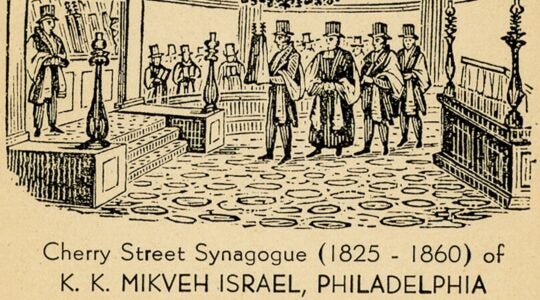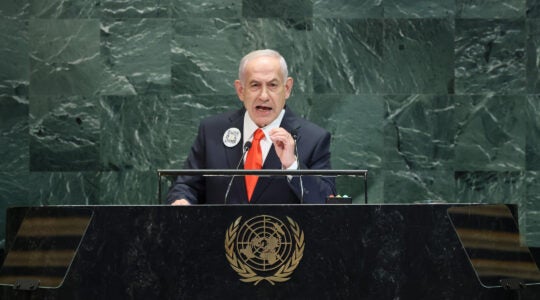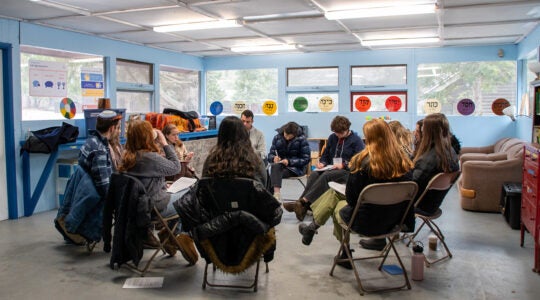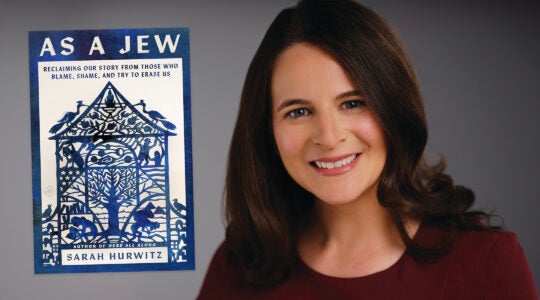I suspect that nearly every American seminary student of the past generation has heard a variant of this sage advice attributed to the preacher Henry Fosdick:
“Make ‘em laugh, make ‘em cry; 20 minutes, say goodbye.”
What’s true for preaching is true for services as a whole. The words, music, movement and setting for collective prayer must combine to trigger an instinctive, deeply rooted emotional response. Unfortunately, rather than heightening the emotions, all too many congregations are simply going through the motions. And in this Darwinian environment where only the most adaptable synagogues survive, “good enough” is no longer good enough.
I was also told in rabbinical school that our services couldn’t hope to be as stirring as Broadway or as moving as the Met, so we shouldn’t try to compete. But that’s not true. Done properly, a single Shabbat service has the potential to evoke more laughter and tears than a week of Neil Simon and “Aida”.
I’m pleased to say that my own congregation “gets it.” While our locale in suburbia gives us neither the media attention nor the enormous pool of attendees from which big city shuls draw, we’re doing something special here in Stamford, especially on Friday nights.
How special? Increased attendance of 500 percent special. Amazing buzz special. If we were in Manhattan it might be considered Next Big Thing special. Our cantor, George Mordecai, is redefining the role with a new musical synthesis – some call it “Jew-sion” – blending his Sephardic roots with contemporary rock, folk, Israeli and classical religious piyyut (poetry). Sometimes it seems more jam session than service, borrowing from traditions as diverse as Kirtan, Sufi, Gregorian, Naomi Shemer and Bob Dylan. The service is inclusive, real, joyous, accessible, intimate, musical, serious and funny. It touches people deeply, it teaches without preaching, it is communal, it is intensely personal, it resonates for all ages, for all backgrounds, for agnostics, too. It is warm and welcoming. It is multicultural, taking us on a journey throughout the Jewish world and beyond. It is deeply connected to Israel, Hebrew language and traditional prayer. But it is utterly new. It is a shir chadash, a song both new and ancient.
A few weeks ago, with hundreds filling our sanctuary, a congregant looked over at a guest’s face glowing in wonderment and thought of a cute marketing slogan: “Sing. Pray. Love.”
Oh, and one other thing about our service. It is Conservative.
Yes, ladies and gentlemen, non-Orthodox Judaism is alive and well. Are you listening, Michael Steinhardt? Far from Manhattan, Brooklyn and Beverly Hills, in the land of Target and Wal-mart, dusty synagogues are being recast as innovative start-ups and garage band minyans. Slowly, and with only limited help from fractured national leadership, the ‘burbs are birthing an authentic Judaism that speaks to the needs and desires of the vast majority of American Jews – connecting them to our shrinking, wireless world rather than building walls to keep the Other out; demonstrating inclusivity rather than fearful chauvinism; championing bold vision over knee-jerk nostalgia and honest questioning over fearful silence, and modeling an unconditional love for Israel while reserving the right to question its policies. Out here in the ‘burbs, Millennials and Baby Boomers join hands and raise voices together, providing instant grandparents for the 20-somethings and an invigorating youthful edginess for the older folk.
While I’m proud of what my congregation is doing, I’m no blind shul shill. Truth be told, it’s taken a long time for us to reach this point. I’ve been here nearly a quarter of a century (oy) and culture change has not come easily. But it has come, and with great enthusiasm. And what we are doing is happening in lots of communities. You just don’t read about them because The Story out there is that liberal Judaism is dying. I’m telling you that it’s alive and well. Who are you going to believe? Demographers or me?
So how can your community move to the next level? Some tips:
♦ Cultivate gentleness and non-judgmentalism in your culture, beginning at the board level. Wean your leadership of negativity and mistrust.
♦ Your leaders and major donors must buy into the fact that in this environment it is “change or die.” Never be afraid to try something different, even if it means the occasional failure.
♦ Grow with your rabbi – and cantor too. And nurture their partnership.
♦ Most of all, the service is the thing. The prayer experience must be authentic yet accessible; connecting us to our deepest, most human feelings. Make it real.
♦ It’s OK to pump up attendance with meals and guest speakers, but if your service isn’t carrying the day, fix it.
♦ Aim for the emotional jugular, always:
Laugh. Cry. Love.
Our most powerful human drives and instincts (along with “eat,” which we save for the Kiddush) are also the most contagious. When there is laughter there is a potent unity. Even the worst pun imaginable evokes an instantaneous “Aw!” so forceful that it sounds like awe and feels like a prayer. When we are all singing together, even our breathing becomes synchronized, as the inspiration drawn from the prayers transcends their literal meaning, even among those who do not understand Hebrew (my congregation also distributes a comprehensive English guide to the service to placate the incurably left brained, but in truth the goal is less to comprehend the prayers than to actualize them).
Throughout the service, as we laugh, cry, sing and breathe, those involuntary biological reactions build upon themselves until they generate the most human response of all, compassion. Then, with our empathetic centrifuges spinning at maximum capacity, we project that regenerated love out into the world. As the love simply radiates from the room, the service then becomes both an expression of our collective conscience and a catalyst for communal action.
Sing. Pray. Love. The magic of prayer can transform any community. Even one living in the shadow of the nearby strip mall.
Rabbi Joshua Hammerman is spiritual leader of Temple Beth El in Stamford, Conn.
The New York Jewish Week brings you the stories behind the headlines, keeping you connected to Jewish life in New York. Help sustain the reporting you trust by donating today.




